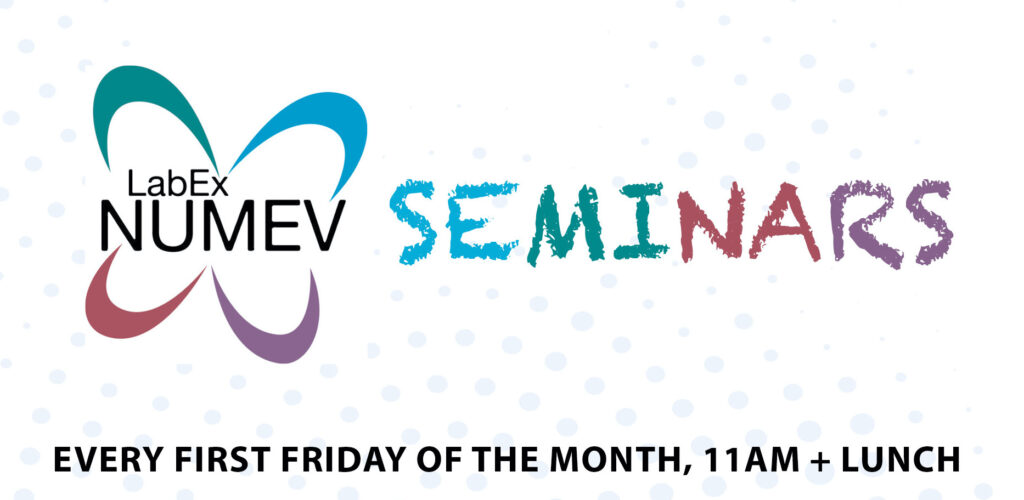“Quantum effects in molecular systems in the gas and condensed phases: development of methods and applications”
This event has passed!
NUMEV seminars are open to a wide audience of students and researchers from all disciplines who wish to learn more about the current research areas of the NUMEV-MIPS community (Mathematics, Computer Science, Physics, and Systems) or about opportunities to develop their skills and expertise.

"Quantum effects in molecular systems in the gas and condensed phases: development of methods and applications"
. Llinersy Uranga-Pina, DynAMoS (Dynamical processes in Atomic and Molecular Systems), University of Havana & MAK'IT (Montpellier Advanced Knowledge Institute on Transitions), University of Montpellier
The theoretical study of the physical properties of systems at the nanoscale poses significant challenges for modern computational physics and chemistry, due to the manifestation of significant quantum effects and the need for accurate first-principles descriptions of relevant intermolecular interactions. While computer simulations allow essentially exact calculations of the thermodynamic and dynamic properties of classical systems, the goal of developing computational techniques with a similar degree of accuracy for generic many-body quantum systems remains difficult to achieve.
To this end, trajectory-based methods are very attractive because they have very favorable scaling properties for studying the dynamics of multidimensional systems, compared to wave packet propagation techniques.
We will illustrate the performance (in terms of numerical accuracy and efficiency) of recently developed trajectory-based methods for studying ultrafast quantum and semiclassical dynamics. We focus on the representation of interacting trajectories, which translates the initial quantum problem into the motion of an equivalent classical system (of higher dimension).
Subsequently, we will illustrate the application of this and other methods to the computational study of technologically relevant phenomena, namely hydrogen absorption by nanostructured surfaces, the influence of geometry and chemical composition on the hydrogen storage capacities and photocatalytic efficiency of nanostructured surfaces, and the relationship between the size, structural and chemical characteristics of conjugated organic molecules and their photoinduced dynamics, the spatial localization of excitons, and optoelectronic properties.
“Quantum effects in molecular systems in gas and condensed phases: method development and applications”
. Llinersy Uranga-Pina, DynAMoS (Dynamical processes in Atomic and Molecular Systems), University of Havana & MAK’IT (Montpellier Advanced Knowledge Institute on Transitions), University of Montpellier
Abstract
The theoretical study of the physical properties of nanoscale systems poses significant challenges to modern computational physics and chemistry, due to the manifestation of significant quantum effects and the need for accurate, first-principle descriptions of the relevant intermolecular interactions. While computer simulations allow essentially exact calculations of the thermodynamic and dynamic properties of classical systems, the goal of developing computational techniques exhibiting a similar degree of accuracy for generic many-body quantum systems remains elusive.
To this end, trajectory-based methods are very appealing, since they exhibit very favorable scaling properties for studying the dynamics of multidimensional systems, compared to wave packet propagation techniques.
We will illustrate the performance (in terms of numerical accuracy and efficiency) of recently developed trajectory-based methods to study ultrafast quantum and semiclassical dynamics. We focus on the so-called Interacting Trajectory Representation, which maps the originally quantum problem into the motion of an equivalent (higher-dimensional) classical system.
Subsequently, we will illustrate the application of this and other methods to the computational investigation of technologically relevant phenomena, namely the hydrogen uptake by nanostructured surfaces, the influence of the geometry and of chemical composition on the hydrogen storage capacities and on the photocatalytic efficiency of nanostructured surfaces, and the relation between size, structural, and chemical features of organic conjugated molecules with their photoinduced dynamics, exciton spatial localization, and optoelectronic properties.
Receive a weekly summary of the UM agenda
* By entering your email address, you agree to receive a weekly summary of the UM calendar by email and acknowledge that you have read ourprivacy policy. You can unsubscribe at any time using the unsubscribe linkor by contacting us by email.
